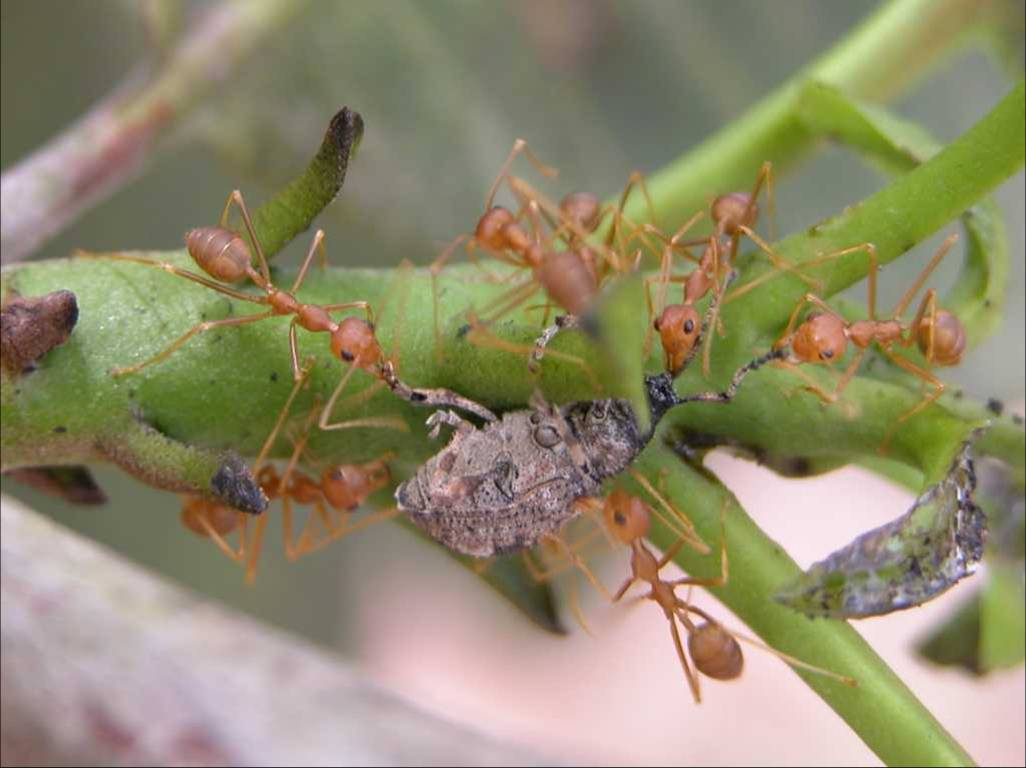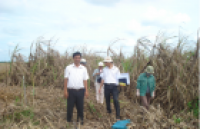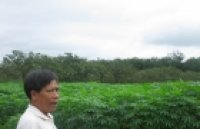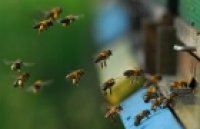| Genetic diversity and genome-wide association study of partial resistance to Sclerotinia stem rot in a Canadian soybean germplasm panel |
|
Sclerotinia stem rot (SSR), caused by the fungal pathogen Sclerotinia sclerotiorum, is one of the most important diseases leading to significant soybean yield losses in Canada and worldwide. Developing soybean cultivars that are genetically resistant to the disease is the most inexpensive and reliable method to control the disease. However, breeding for resistance is hampered by the highly complex nature of genetic resistance to SSR in soybean. |
|
Deus Mugabe, Mohsen Yoosefzadeh-Najafabadi & Istvan Rajcan Theoretical and Applied Genetics; August 11 2024; vol.137; article 201
Figure: Soybean Sclerotia stem rot symptom Key MessageDeveloping genetically resistant soybean cultivars is key in controlling the destructive Sclerotinia Stem Rot (SSR) disease. Here, a GWAS study in Canadian soybeans identified potential marker-trait associations and candidate genes, paving the way for more efficient breeding methods for SSR. AbstractSclerotinia stem rot (SSR), caused by the fungal pathogen Sclerotinia sclerotiorum, is one of the most important diseases leading to significant soybean yield losses in Canada and worldwide. Developing soybean cultivars that are genetically resistant to the disease is the most inexpensive and reliable method to control the disease. However, breeding for resistance is hampered by the highly complex nature of genetic resistance to SSR in soybean. This study sought to understand the genetic basis underlying SSR resistance particularly in soybean grown in Canada. Consequently, a panel of 193 genotypes was assembled based on maturity group and genetic diversity as representative of Canadian soybean cultivars. Plants were inoculated and screened for SSR resistance in controlled environments, where variation for SSR phenotypic response was observed. The panel was also genotyped via genotyping-by-sequencing and the resulting genotypic data were imputed using BEAGLE v5 leading to a catalogue of 417 K SNPs. Through genome-wide association analyses (GWAS) using FarmCPU method with threshold of FDR-adjusted p-values < 0.1, we identified significant SNPs on chromosomes 2 and 9 with allele effects of 16.1 and 14.3, respectively. Further analysis identified three potential candidate genes linked to SSR disease resistance within a 100 Kb window surrounding each of the peak SNPs. Our results will be important in developing molecular markers that can speed up the breeding for SSR resistance in Canadian grown soybean.
See https://link.springer.com/article/10.1007/s00122-024-04708-8
|
|
|
|
[ Tin tức liên quan ]___________________________________________________
|


 Curently online :
Curently online :
 Total visitors :
Total visitors :
(220).png)


